Year: 2004
Directed by: Masahiko Maesawa
Written by: Chinfa Kang
IMDB Reference
Degree of Cyberpunk Visuals: Medium
Correlation to Cyberpunk Themes: Low
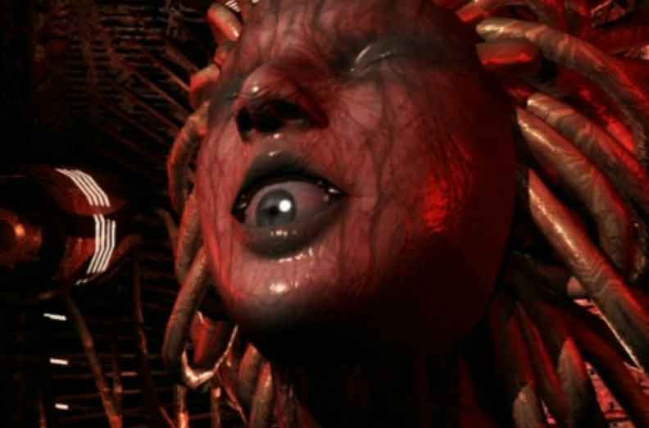
Overview: Galerians Rion is a a low-quality animation - meaning video game quality with a semi-coherent story. Unfortunately, the story too plays like a video game. The star of the video game is a boy named Rion, who wakes up in a bizarre dystopic version of his former world. It turns out that this crazed supercomputer named Dorothy is attempting to become a God and only Rion can stop her. To do so, he needs to find his sister Lilia, who, along with Rion, has been given a virus that combined, can destroy Dorothy. As most RPGs, Rion’s powers grow as he fights the Galerians that Dorothy throws up to block his journey to finding his sister. You can tell the end of the segment, because, um, Rion fights a boss character. Yes, you really are watching someone play a video game here!
The Bottom Line: While I am impressed that Maesawa was able to produce an anime on such a limited budget (I’m guessing a game environment was used to make most of the visuals other than Dorothy), they just aren’t good enough to make for compelling viewing. The visuals are rather fascinating in places - Dorothy (see above) is pretty cool for instance - and certainly are cyberpunk, as is the story, but there just isn’t enough here, either in story or visuals to make this worth recommending. I will give it a point for attempting to do a full scale anime without a budget.
~See movies similar to this one~
Year: 1993
Directed by: Hiroshi Fukutomi
Written by: Yukito Kishiro (Manga), Akinori Endo
IMDB Reference
Degree of Cyberpunk Visuals: High
Correlation to Cyberpunk Themes: Very High
Key Cast Members:
Gally (Alita): Miki Itô
Ido: Kariya Shunsuke
Yugo: Kappei Yamaguchi
Chiren: Mami Koyama
Vector: Shigeru Chiba
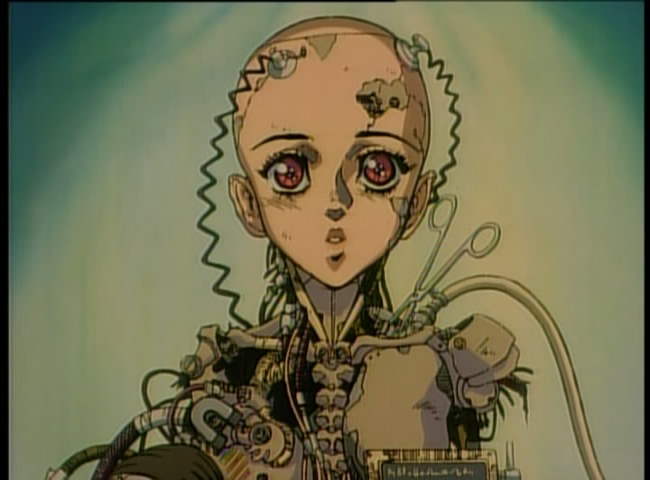
Overview: Battle Angel is based off a very well done Manga series called Battle Angel Alita. The movie covers the first two volumes of the Manga: Rusty Angel, which documents Alita’s “rebirth” and Tears of an Angel, which portrays a tragic love story. This anime from 1993 is one of the best man-machine interface animes out. The story is solid, and the drawing for that time period is terrific. While you might hear some gripe that the Manga is better, I think Fukutomi did a terrific job in taking Kishiro’s story to anime. I can only hope that James Cameron does a similarly wonderful job with the upcoming live action version of this. Just a warning - this is not a kids story - it contains lots of blood, head removals and minor amounts of nudity.
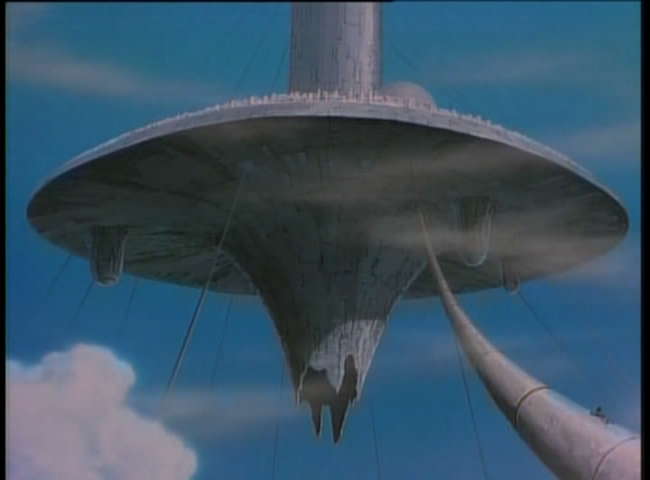
The Setting: Battle Angel takes place far into the future, after a societal collapse has occurred. Advanced human society has been relegated to a floating city called Zalem, that sits above a refuse heap called Scrap Iron City, which is inhabited by denizens living off the scraps and waste products Zalem expels. A corporation called the “Factory,” the primary employer for Scrap Iron City, sends products back up to Zalem through a series of huge metal tubes. Cyborg technology has become a way of life, with many “humans” having only their brain remaining from their original human body host. Scavenging and theft has become a way of life for many. Backbones are a particularly sought after commodity by thieves, who sometimes will violently take them from their living hosts. As social services no longer exist, the Factory posts “bounties” for the heads of the most egregious villians, which bounty hunters, called Hunter-Warriors pursue for money.
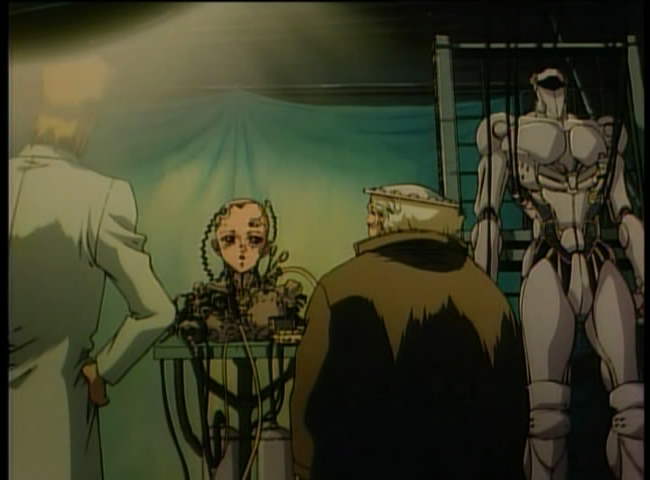
Rusty Angel: Daisuke Ido, an cyborg doctor extraordinaire, former citizen of Zalem, scavenges through the refuse heap to find spare cyborg parts to repair the citizens of Scrap Iron City. One day he comes across a female cyborg head that has a still-living human brain in it. He sets out to repair this head and gives her a wonderful body off of parts he has collected. He names her Gally (she is called Alita in the Manga), and she seems totally restored, except for the loss of memory from her earlier life. Ido becomes attached to Gally and they quickly develop a father-daughter type relationship.
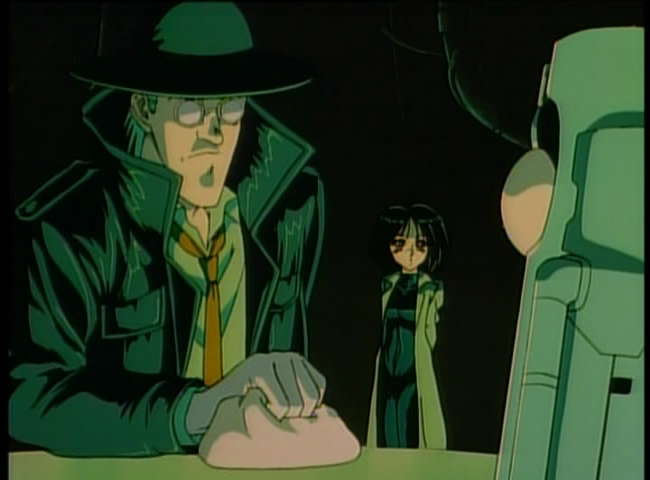
Gally learns that Ido moonlights also a Hunter-Warrior both for moral reasons and to support his medical practice. Gally saves Ido from certain death, and thus, reveals that she, in her former life, was also a very talented warrior. Under protest from Ido, Gally asserts her individuality and desire to become a Hunter-Warrior like Ido, so that she too can have purpose to her life.
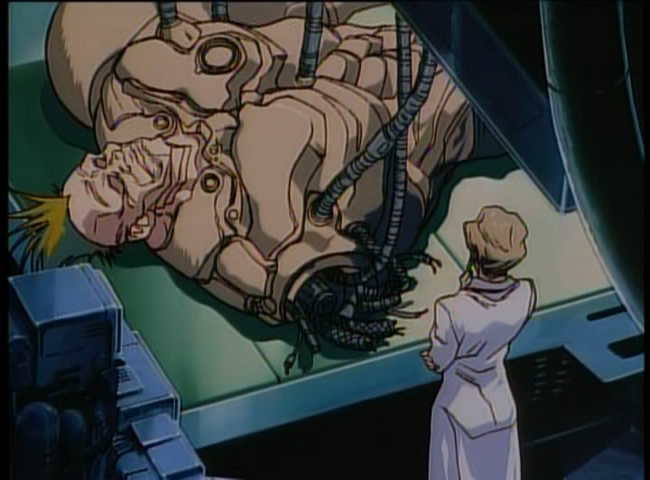
Chiren, also a cyborg doctor and Ido’s former partner, has also been ousted from Zalem, and is consumed with finding a way to return. Deciding that she will do anything to make this happen, Chiren hooks up with Vector, a shady character who has connections with the “Factory,” who agrees to eventually take her to Zalem in return for sexual favors and for her assistance in building a supra-cyborg gladiator named Greweicia for the fighting ring. This cyborg warrior also has a penchant for eating brains, and ends up on the bounty list. Chiren, wanting to be seen as superior to Ido, gets Greweicia to fight Gally in the hopes of destroying her, and thus, destroying Ido.
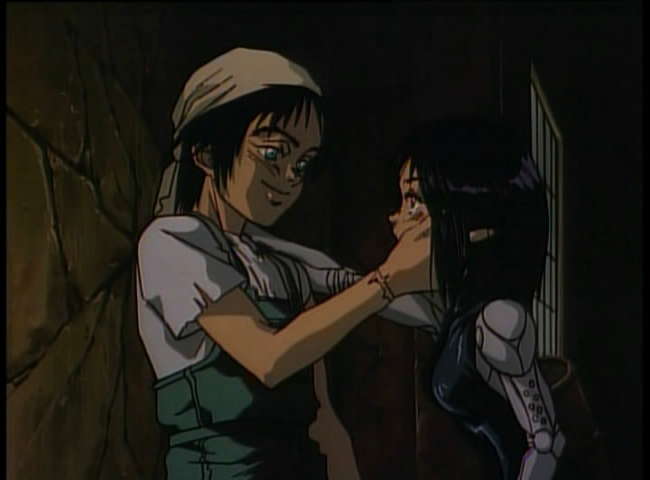
Tears of an Angel: Gally, in exploring the city has become infatuated with a hard working body named Yugo, who dreams of going to Zalem. Although it’s common knowledge that nobody born in Scrap Iron City can ever go to Zalem, Yogo is also consumed with finding a way, and has gotten an agreement from Vector, who promises Yugo if he can make 10,000,000 credits, than he will take Yugo to Zalem. Yugo has taken him up on his offer and has started stealing cyborg spinal cords as a way to augment his day job of fixing machinery. He is discovered, and is put on the Bounty list. Gally, who has fallen deeply in love with him, tries to rescue him from a rival bounty hunter. Unfortunately she is too late, but is able to save his head, and asks Ido to turn him into a cyborg. Even after becoming a cyborg, Yugo’s dreams of reaching Zalem cannot be abated, as he sees his life a struggle against the worthlessness that is the Scap Iron City.
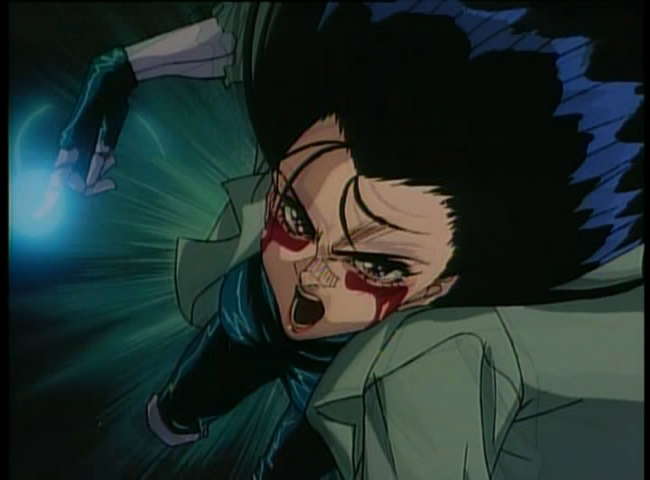
The Artwork: In Battle Angel, we see strong influences of Akira in most every aspect of the production. From the facial expressions to the darkly textured backgrounds to the fighting style approach, Battle Angel clearly has used Akira as a template for modern animation techniques. Like many OAVs of this time period, some of the backgrounds are bland while others are lavishly penned and inked with multi-layered designs. They “pick their battles” with the designs, but for the most part, the decisions are solid. The simple designs are in backgrounds such as the sky and in Ido’s house. The more complex ones are in the underground, Yugo’s hang out, and in the refuse heap scenes – this is where most of the action and plot take place.
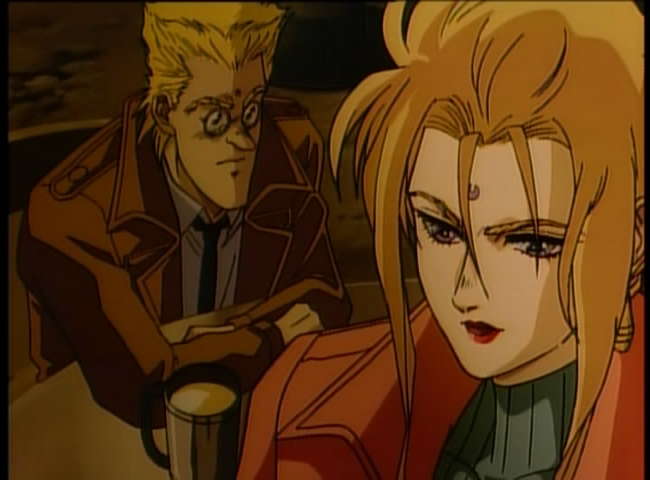
Changes from the Manga: While I think Battle Angel is a terrific anime, there are some changes from the Manga that some find annoying. Most bizarre is the renaming of Alita to Gally, and the city Tiphares to Zalem. However, unlike some, I don’t find the changes in the plot to be that problematic. The anime wonderfully captures the essence of the Manga. Perhaps the biggest change is the rationale for Alita’s powers. In the anime, we really don’t get an explanation, but in the Manga, Alita is first given a normal body by Ido, and ends up destroying it in her first fight. Realizing that Alita is a warrior at heart, Ido gives her the body he has saved for a long time – that of a berserker warrior. The primary villain in Rusty Angel is also different – he is a being who has grown up in the sewers, and after losing his body in fighting Alita, he takes over the Gladiator’s body. And Chiren, a central character in the anime is not in the first to novels of the Manga. Again, for the most part, I have no problems with the changes, and actually love the dimension that Chiren adds.
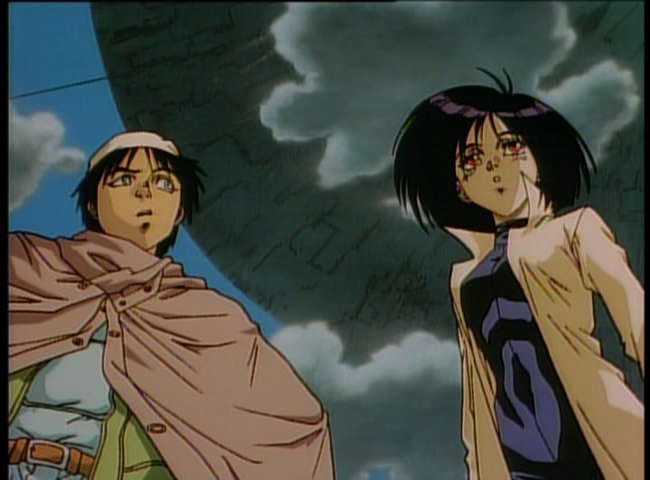
The Bottom Line: Battle Angel (Alita) just works for me as an anime. It is intelligent enough and well enough executed to get you to imagine a world where cyborgs are a reality. The world from the underground perspective is well done and Alita (I call her Alita, not Gally) as a character is terrific. Along with Armitage III and Ghost in the Shell (obviously), Alita is one of the best animes of this kind. Just a caution for those who have only seen the VHS, like most Japanese animes, Battle Angel comes off FAR FAR better with the Japanese dubbing cast than it does the English cast.
~See movies similar to this one~
Year: 1987
Directed by: Shirow Masamune
Written by: Shirow Masamune
IMDB Reference
Degree of Cyberpunk Visuals: Medium
Correlation to Cyberpunk Themes: Medium
Key Cast Members:
Sybel: Yoshiko Sakakibara
Ferris: Chisa Yokoyama
Dr. Matthew: Ichirô Nagai
Col. Arthur: Shinji Ogawa
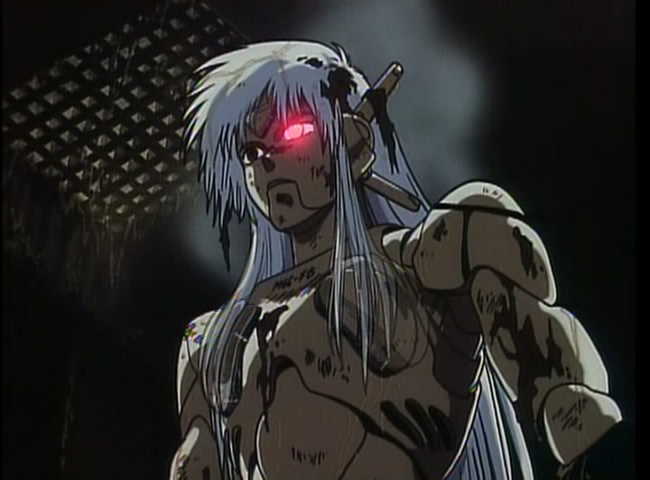
Overview: Masume Shirow’s Black Magic M-66 is one of the best Terminator anime clones. Most know Masume Shirow from his Appleseed and Ghost in the Shell Mangas, not to mention his myriad of other hot chicks kicking butt artwork (Intron Depot Ballistics is my favorite). Black Magic M-66 is his first anime. The visuals, while quality, are definitely 80s cartoon style.
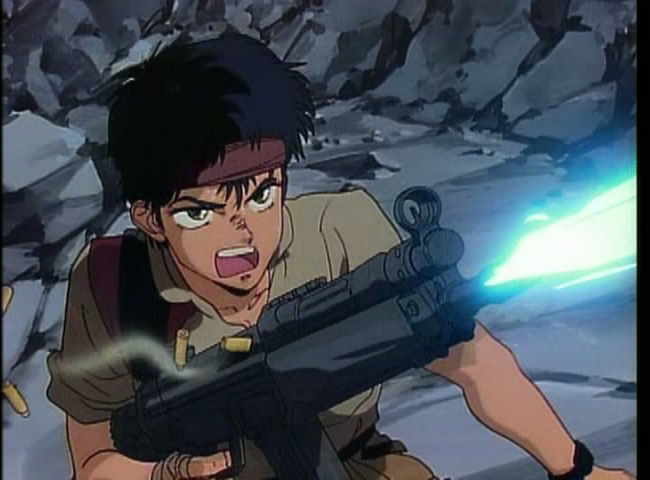
In this “When Good Fembots Go Bad” tale, a tough and sexy journalist who likes to hang out in the buff picks up a military transmission on her scanner about an escaped weapon system. In her haste to get the story, she almost forgets to put on clothes, but finally comes back for a pair of pants. She eventually tracks the military to the woods and finds them besieged by an android weapon accidentally “turned on” after a horrible cargo plane crash.
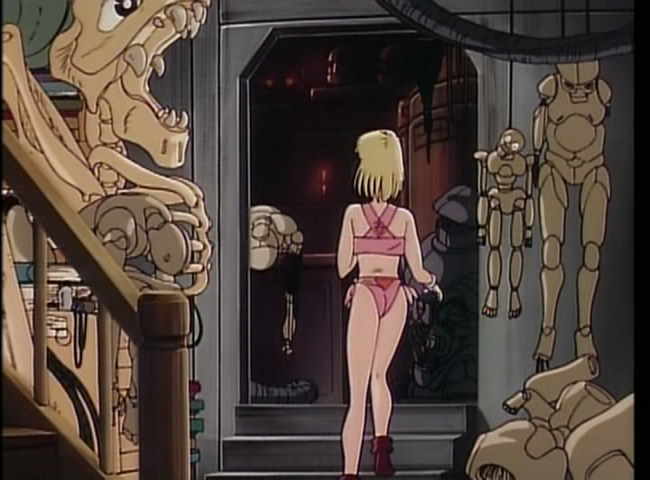
This android chick is ultra-tough, nearly unstoppable, and, due to it running on laboratory test data, apparently has been programmed to kill the inventor’s daughter. The reporter figures this out tries to rescue the android inventor’s daughter, but the M-66 is hot on her heels. All hell breaks lose in this anime, which is essentially a Terminator-style chase from beginning to end.
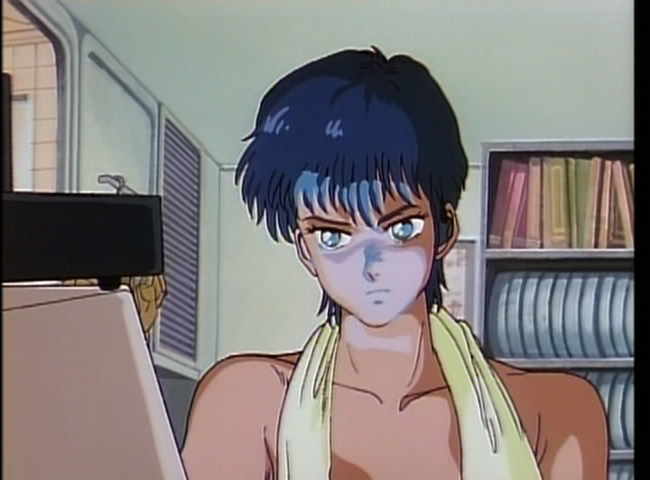
If you’re a cyber-studies researcher in need of a good example of cyberpunk’s propensity for objectification of women, Black Magic M-66 is your movie! You get a bevy of good stereotypes here, including the tougher than tough, smarter than smart, ultra-hot reporter who doesn’t like to wear clothes, the needy and continually fainting daughter always in need of rescue, and of course the M-66 weapon system - made in a woman’s image for God knows what reason (other than the obvious, of course). Again, this movie doesn’t bother you with needless philosophies that might confuse things - its all visual.
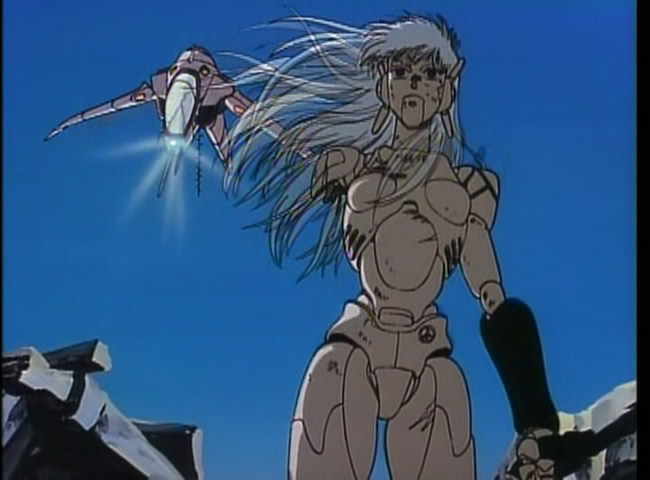
The Bottom Line: Black Magic M-66 does not have in-depth philosophical questions - its not that type of cyberpunk anime. This is an action-fest from the get-go. It doesn’t bother giving you lots of in-depth set-up or character rationales. The action is good though, and the pacing is consistently fast and tense, and generally goes fast enough for you to ignore plot holes and bizarre side questions like why was the inventor’s daughter in the target the “test” data. The anime is still 80s style, especially in the backgrounds, but Shirow always does fine quality products.
~See movies similar to this one~
Tags: cyberpunk movie review anime M-66
Year: 1994
Directed by: Alan Best et al.
Written by: Martin M. Borycki et al.
Degree of Cyberpunk Visuals: High
Correlation to Cyberpunk Themes: Medium

Overview: This is one of those shows that TOTALLY addicted me to it when it came out. This was the first 3D animation I ever saw, and I must say, I completely fell in love with it. Reboot is a wonderfully intelligent kids show, that for techies, seemed to have all the inside-tech jokes just right. All the characters are inside a computer world - the mainframe, and the good guys are trying to stop the evil virus, Megabyte from infecting the rest of the mainframe.

The Bottom Line: Reboot provided us a terrific fantasy view inside a virtual computer. While the first two seasons were fun, season 3 was just terrific! After ABC dropped this Canadian production, they were able to go adult-like, with much darker themes and a really cool sword and sorcery bent. The follow-on movies captured the fun of the first two seasons while keeping the darkness of the third. And while the CG has definitely been surpassed, for some reason, the look still works.
~See movies similar to this one~
Tags: cyberpunk movie review Reboot anime
Year: 2001
Directed by: Rintaro
Written by: Osamu Tezuka, Katsuhiro Ôtomo
IMDB Reference
Degree of Cyberpunk Visuals: High
Correlation to Cyberpunk Themes: High
Key Cast Members:
Tima (voice): Yuka Imoto
Kenichi (voice): Kei Kobayashi

Overview: Metropolis is a wonderful anime that, while it shares the same name as a far more famous movie, it is in fact a different story altogether. In this story, also set in an astoundingly beautiful futuristic city, with three tiers of inhabitants - the elite, the human working class, and all the way at the bottom, the slave-like robots. The powerful corporate leader who runs Metropolis, Duke Red, has created a structure called the Ziggurat, a huge tower designed to control all information and machines in the world. To make this possible, he hires Dr. Laughton, a genius criminal scientist to make a an super-android focal point of the Ziggurat, who is designed in the image of his daughter.
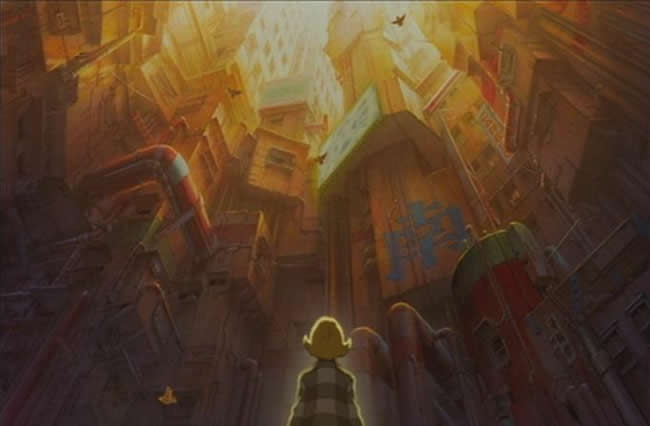
Fortunately for the world, their plans are disrupted when Shinsaku Ban, a detective from Japan, and his nephew Kenichi, arrive to track down and capture Dr. Laughton. They disrupt the “birthing” of the super-android, called Tima, and destroy the lab. In the ensuing chaos, Kenichi finds Tima, and thinking her human, rescues her from the destruction. They become separated from Separated from his uncle, and begin a journey of discovery in the lower levels of Metropolis.
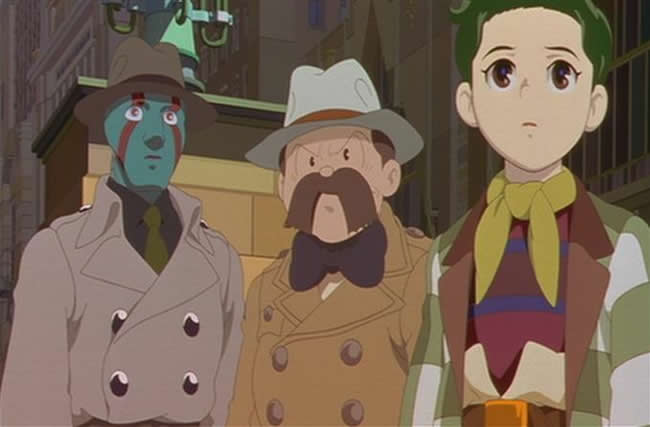
Eventually, Duke Red learns that his super-android is alive and well, and dedicates everything to catch her. Over the course of the movie, Tima begins to learn her true nefarious purpose, while at the same time, begins to fall in love with Kinichi. This becomes a story of questioning what is humanity, and whether robots can be loved and treated like humans, or whether they are machines to be used for our purposes.
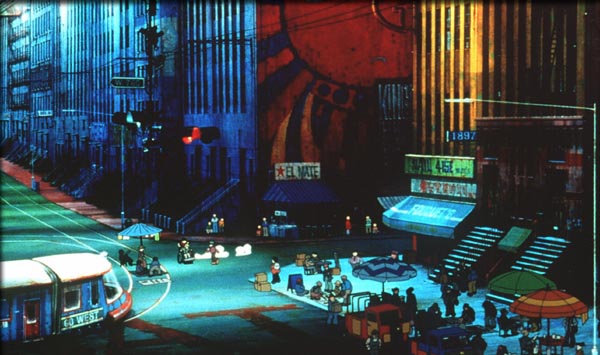
The Visuals and Sound: The visuals in metropolis are both varied and often astounding. We get a wonderful mix of 2D-3D graphics - unlike most movies, they are definitely weighted towards the 2D side. And I love how Metropolis makes the change in colors from almost a pastel-type opening to dark and dirty colors as the movie progresses. This is very similar to how Transmetropolitan does it in graphic novels. The characters are done in an interesting style, with almost completely round heads. This is disconcerting at first, but eventually you get used to it. And top top if off, we get some of the most wonderful use fo music in an anime. Some of the old fashioned Jazz tunes in here create a wonderful retro-type mood that really seems to fit.
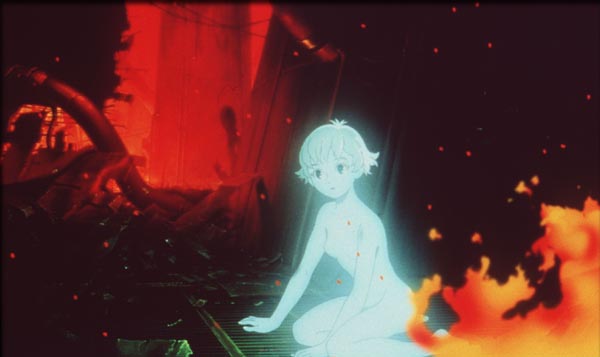
The Bottom Line: Metropolis is a terrific little anime, although I would have liked to have seen a few parts of the script flushed out a bit more. Still, I love the movie, but it’s the ending that makes it for me. Tima’s question at the end pretty much sums up the purpose of the movie. This is a really nice exploration into the nature of humanity thing from a cyberpunk film standpoint.
~See movies similar to this one~
Tags: cyberpunk movie review anime metropolis
Year: 1988
Directed by: Kazuyoshi Katayama
Written by: Kazuyoshi Katayama, Masamune Shirow (manga)
IMDB Reference
Degree of Cyberpunk Visuals: Medium
Correlation to Cyberpunk Themes: High
Key Cast Members:
- Deunan: Masako Katsuki
- Briareos: Yoshisada Sakaguchi
Rating: 7 out of 10
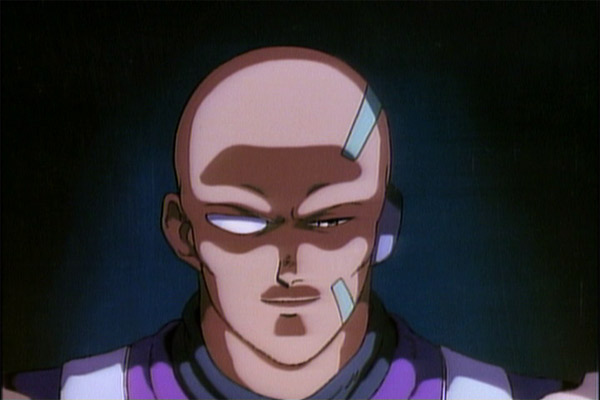
Overview: Released the same year as Akira, this Masamune Shirow story is far more an artifact of 80s Anime, whereas Akira points the way to how anime will look in the 90s. This early Mecha movie is violent, profanity laden and action packed, with a really nice story and interesting philosophical undertones. And interestingly, this is one of the very few animes where the English track is actually the best one.
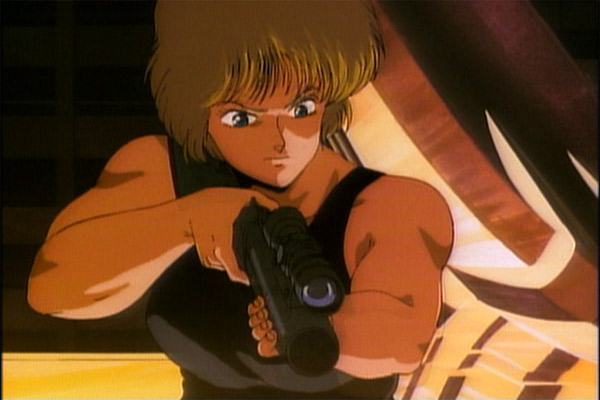
The Story: Appleseed takes place in a dystopian future, in which a city called Olympus has been engineered to be a created as a perfect refuge from the rest of the world. Many of the inhabitants have been bio-engineered “biodroids,” which are half-human, half-cyborgs designed to serve specific roles in the society. An all-powerful computer named GIA controls all city functions, and is just now starting to become responsible for the defense systems. Olympus is so controlled that there is little diversity or struggles required from its inhabitants.
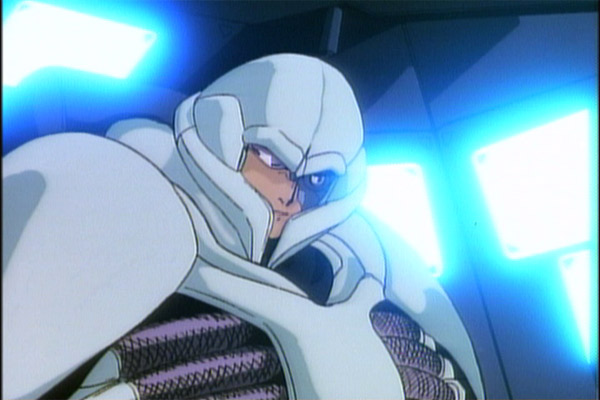
A cyborg terrorist named Sabastian has made it his mission to destroy GIA. He finds a kindred soul in a disenchanted police officer, who’s wife committed suicide after she couldn’t stand living such a controlled existence. They plot to take over the prototype impenetrable tank in order to kill Gia and destroy Olympus. The movie centers around the mecha-laden Swat police force aligning their forces to stop them. In addition to heavy violence, we get MASSIVE amounts of F-bombs dropped here. Its actually rather cool seeing the amount of profanity that is used here - far more than one would expect from an anime such as this.
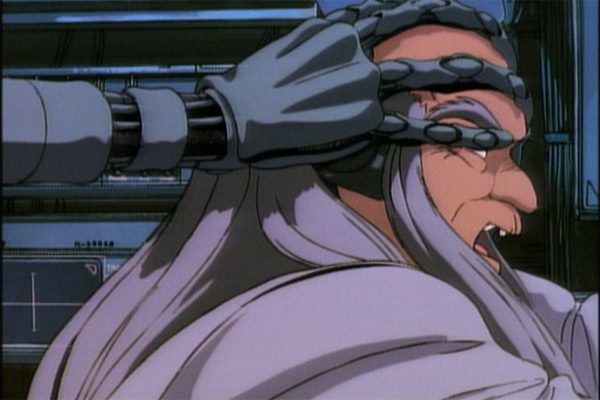
Deunan, a hot police chick and Briareos, a bug-like looking cyborg are Swat team members assigned to stop the terrorists. Incidentally, these two are clearly the precursors for Major Motoko Kusanagi and her cyborg partner, Bateau. While Deunan keeps her clothes on and doesn’t have Motoko’s intelligence, she definitely fills the same roll. Spunkiness is her middle name. The rest of the group, including Sebastian the terrorist, and the rest of the police force all provide decent support.
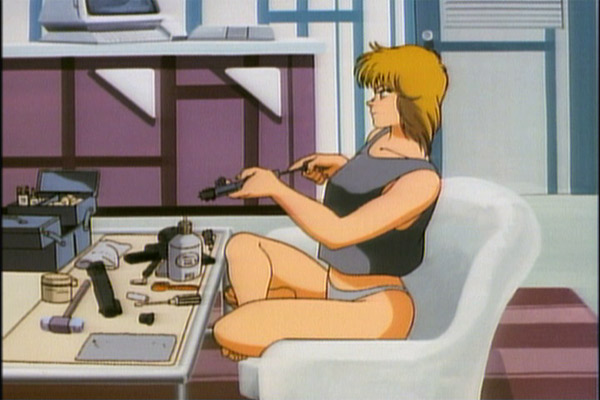
The animation here is still mostly 80s american style. Additionally, unlike the anime of the 90s, the backgrounds are often single, simple colors. While some animation scenes are rather cool, others are really more simple than you’d want. Definitely, the majority of the animation effort is about highlighing Dunan - she definitely looks better than everything else around her. Also, the sound is 80s keyboard music. Sometimes it works, but mostly its just distracting.
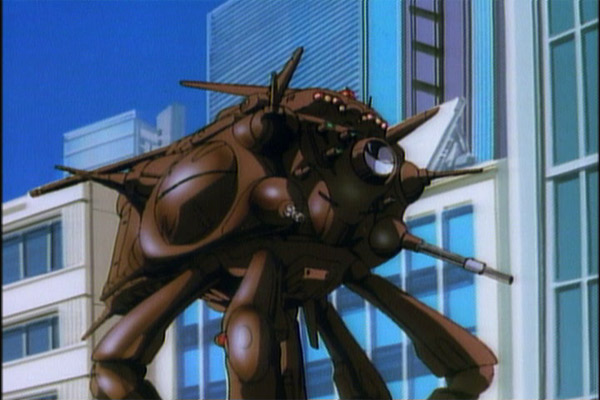
There are a number of messages that Appleseed puts forth. Looking at it today, the most disturbing message deals with Olympus’ rather extreme attempts to protect and inculcate itself from outside terrorists. The symbol for this is a bird in a cage. Considering that the US is in the throws of working this exact issue, Appleseed gives us a stark reminder that we can easily lose the soul of our society while attempting to protect it. Additionally, there are somewhat brief inquiries into what “life” is when examining whether biodroids should be valued similar to humans.
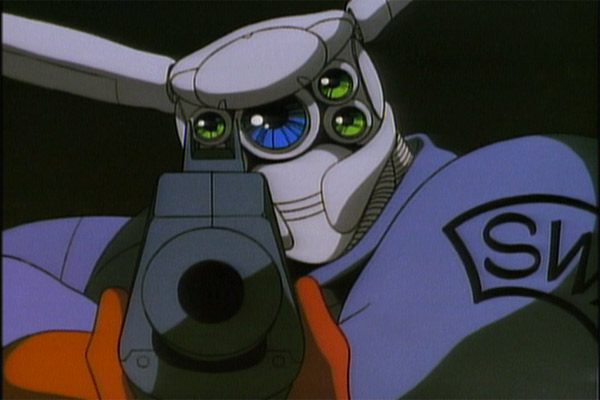
The Bottom Line: Appleseed is a good example of very early Japanese Anime. While its nowhere near the top in terms of animation, the Masamune Shirow’s story is high quality. Truly, the story is why you want to watch this. While the 2004 version definitely wins out on superior graphics, I think the 1988 version is a tighter, more interesting storyline. And if you’ve read the Applesead Manga, then the story, especially the beginning, works far better. You will find yourself becoming connected to the lead characters. But most impressive is the pacing. Appleseed packs an incredible amount of story in 68 minutes - truly, there’s very little fat here.
Year: 1994
Directed by: Hiroyuki Ochi
Written by: Akinori Endo, Chiaki Konaka
IMDB Reference
Degree of Cyberpunk Visuals: High
Correlation to Cyberpunk Themes: Very High
Key Cast Members:
Armitage: Hiroko Kasahara
Ross Sylibus: Yasunori Masutani
D’Anclaude: Ryûsei Nakao
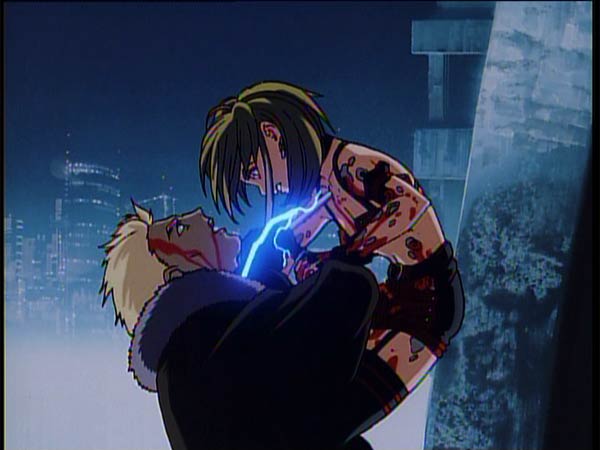
Overview: Armitage III, one of the many Chiaka Konaka written masterpieces (along with Serial Experiments Lain, Texhnolyze, Malice@Doll) is simply an awesome story. If you like Blade Runner and haven’t seen Armitage, you’re doing yourself a disservice. Most of the same issues are raised there, but are done in an original enough way that makes you absolutely love this little anime chick. Humanity as an exclusionary concept which also implies “worth” is fully explored here. Are androids still supposed to just be our servants even if they do have a sense of self-worth?
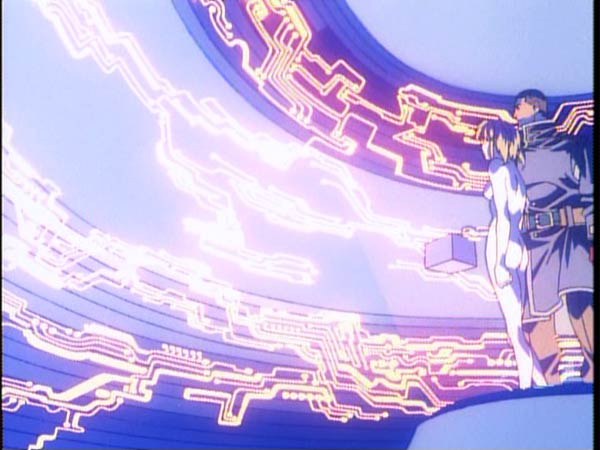
Set in a Blade Runner-like future, mostly centering on Mars, Naomi Armitage is a type III series android who works as a cop on Mars, along with her new partner, Ross Sylibus. While most of the public knows about, and barely tolerates the type II series, they are not aware that there are a few lifelike, human-acting type III series androids living among them. Unfortunately for the robots though, someone knows of their existence and is systematically killing them one by one.
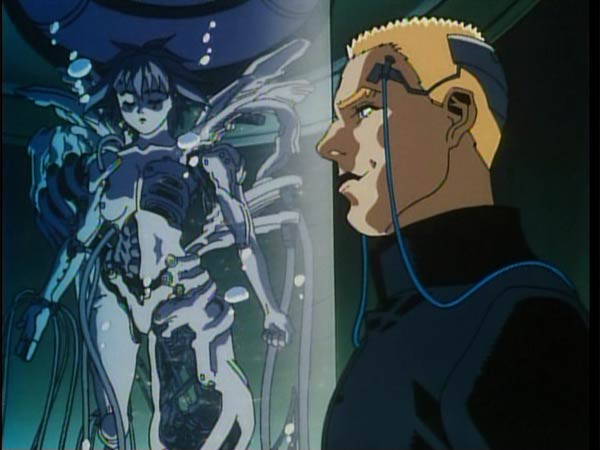
As the plot progresses, Ross, who doesn’t like robots (his former partner was killed by a cyborg) learns that Armitage is an android. Even worse, they learn that the murderer is a series IV robot. Armitage, who starts off as a wise-cracking, disrespectful cop who dresses in sleazy clothes starts to question her “humanity” such as it is. In addition to realizing she’s one of the very few left, Armitage wonders why she was ever created. As she struggles to maintain “sanity,” Ross begin to develop a closer relationship - one that is not too mushy, and works well with the pacing.
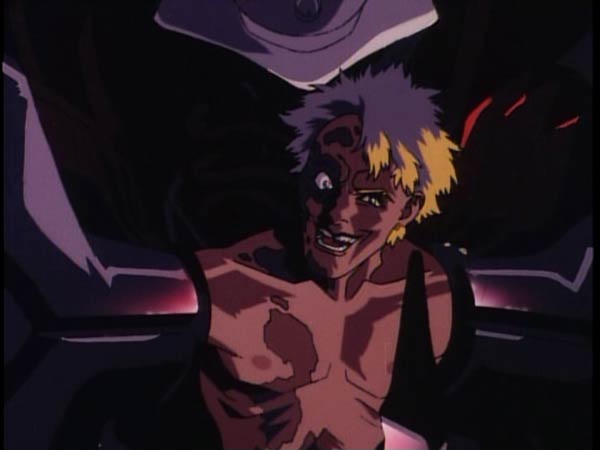
Armitage eventually broadens into a large-scale conflict that involves greedy corporations, inter-galactic disputes, android’s rights, population issues, and all the rest. We get LOTS of gun fights in this, and even a full scale battle, mecha style. In addition to being cute and vulnerable as an android wondering if she has a purpose in life, Armitage also kicks major ass in her burgundy leather ensemble. Guts, martial arts and all sorts of other gadgets come flying out of this chick. She is definitely, tough, strong willed, and lots of fun to watch.
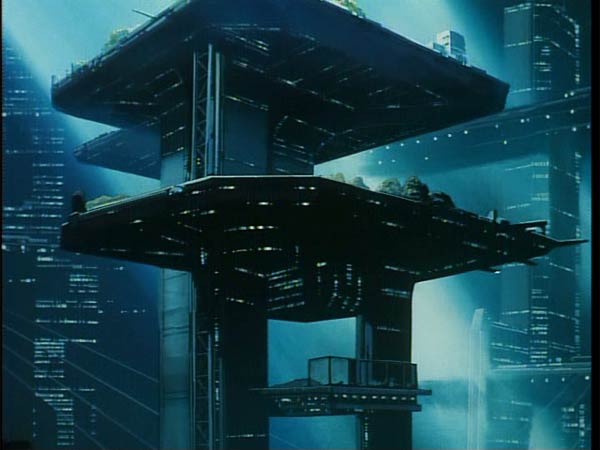
Notice the incredible similarity to another futuristic building in Metropolis.
The story is one of the most compelling in cyberpunk anime and really makes you feel for Armitage. Yes, the whole questioning of humanity by an android has been done before (and since) and since, but Armitage is definitely one of the better ones at this. Within the confines of a murder investigation, Armitage’s “soul” is exposed in her search for larger meaning and purpose, all while her fledgling relationship with a cyborg-hating policeman begins to emerge. Interesting questions are posed such as, what happens if an android has a fatal flaw? Should we throw them away is if they are they truly nothing more than a toaster? This is in essence a mirror to questioning how we deal with handicapped people in human society. We still consider handicapped people valuable and contributing members to society, but would we do the same with disabled Androids? At what point do they become real as opposed to simply remaining property - a tool for humanity?
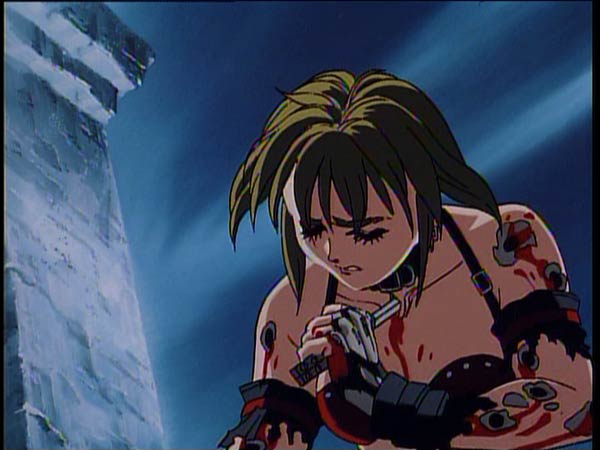
The Bottom Line: The visuals and sounds in Armitage III, while good, are somewhat dated and inconsistent. Some shots are absolutely superb, while others have a relatively plain background and almost 80s looking characters. Overall, there’s enough there to keep your interest, but its the story that delivers. Truly, I absolutely LOVE it!
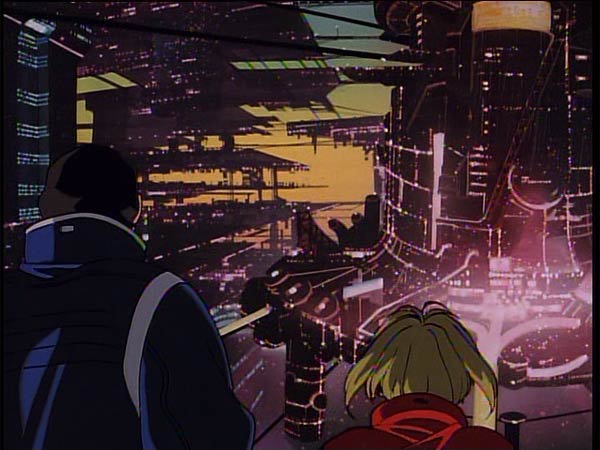
What is Armitage III Polymatrix? Polymatrix is a movie extracted from the 4 OAVs in Armitage III. While it is missing a few interesting scenes, its still watchable. It also has Kieffer Sutherland and Elizabeth Berkley as voice actors here, so if you can’t stand subtitles (You really fix this problem in the long run though), Polymatrix is a reasonable substitute. Some truly hate it primarily due to the English dubbing, the missing scenes and the changed ending. For me, I was OK with the dubbing, was generally OK with the scenes missing, but I liked the ending in the OAV (this movie) better.
~See movies similar to this one~
Movie Review By: SFAM
Year: 2001
Directed by: Jason Wen
Written by: Howard & Jason Wen
IMDB Reference
Length: 13 minutes
Degree of Cyberpunk Visuals: High
Correlation to Cyberpunk Themes: High
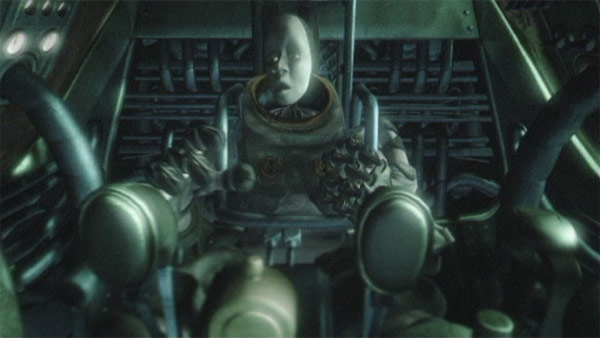
Overview: f8 is a truly wonderful 13 minute film short that captures almost all the key elements of cyberpunk without using any dialogue! f8 was well received in many of the 2001 best animated film short awards (including the Hollywood Film Festival, the Jury Award, and others). The 3D graphics, while not as high quality as might be found in a large budget movie, are more than adequate. Wen’s selection of viewpoints, lighting decisions, movement and shadows are able to emphasize the best qualities of the 3D animation.
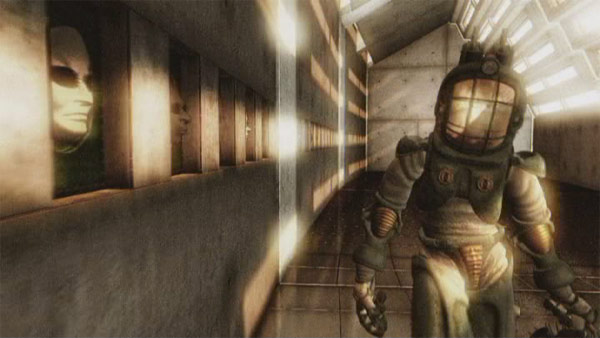
f8 centers on a nameless lead character in a strange futuristic society who wants to gain individuality. He lives in an oppressive, metropolis-like controlling society, where your fate and role is predetermined. But an underground has developed where individuality appears to be the key for admission. The plot follows the plight of our protagonist who attempts to steal a “face,” and thus, will have the ability to express an individual personality.
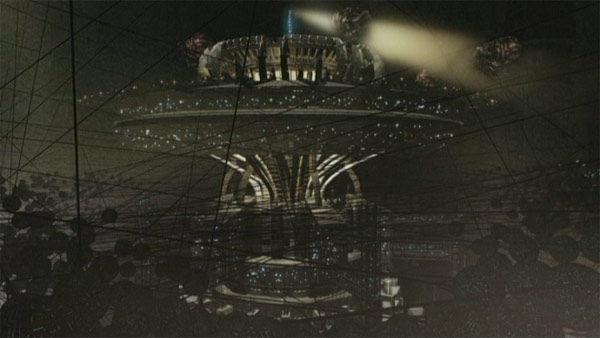
Unfortunately I cannot divulge too much more of the plot for fear of spoiling it. You can get this movie at Best Buy for about 10 bucks - even though its only 13 minutes, I think its worth it. You get 5 commentaries, and truly, the story is interesting enough that you’ll watch it more than a few times. But instead of a plot, here’s some more screen captures of it - these should give you an idea of f8’s visual splendor. Like many cyberpunk films, one color tends to dominate f8 - in this case, yellow is the predominate color.
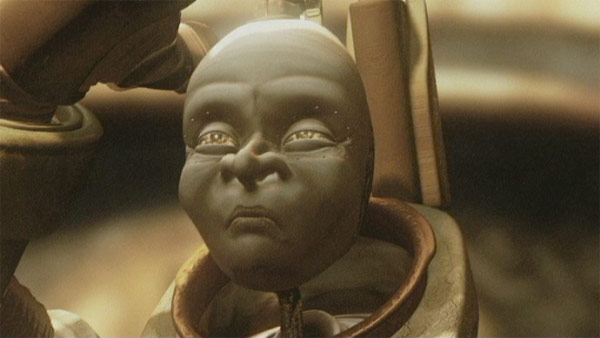
The faces are quite striking in f8 - more so even when you finally get to see their bodies!
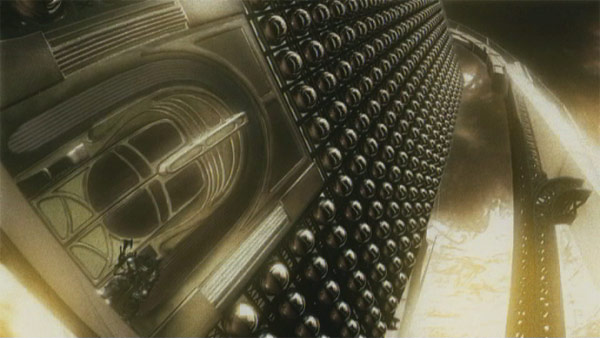
Talk about a Noirish looking building! This has all sorts of high tech, ominous vibes…
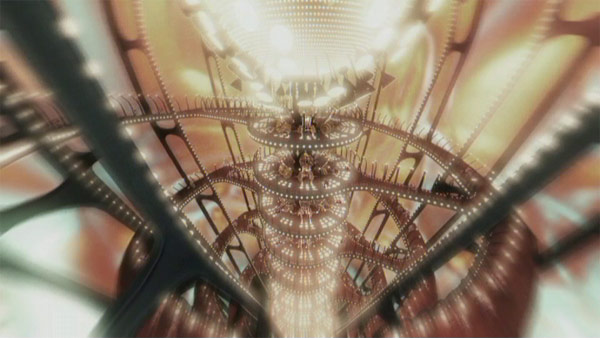
f8 has some fantastic visuals for a 13 minute film short.
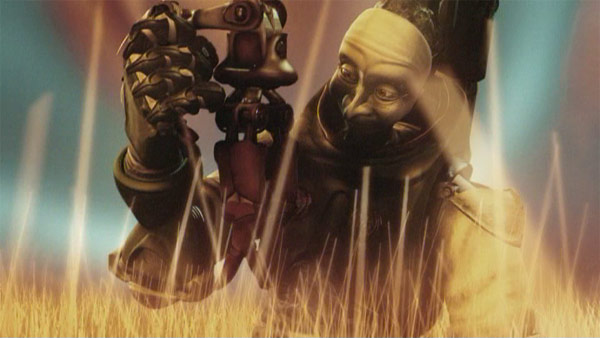
For some reason, this scene really reminds my of the scene in Nausicaä where she is walking through the field of gold tentacles.
~See movies similar to this one~
Year: 1995
Directed by: Mamoru Oshii
Written by: Kazunori Itô, Shirow Masamune (Manga)
IMDB Reference
Degree of Cyberpunk Visuals: Very High
Correlation to Cyberpunk Themes: Very High
Key Cast Members:
Major Motoko Kusanagi: Atsuko Tanaka
Batô: Akio Ôtsuka
Section 9 Department Chief Aramaki: Tamio Ôki
Togusa: Kôichi Yamadera
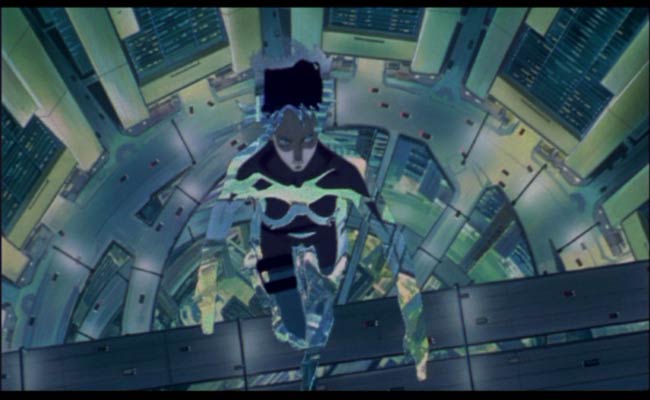
And where does the newborn go from here…the net is vast and infinite…
Overview: After Akira, a case can be made for Ghost in the Shell being the most influential anime ever. While Akira was the first anime to crack international markets, GITS rose anime to something “real,”, and opened the doors for events like Disney’s pursuit of Miyazaki, and eventually, the truly incredibly pace of anime we see today. More important for cyberpunk films, GITS provided a myriad of thoughts and visuals that have been expanded upon in virtually all subsequent cyberpunk animes. James Cameron refers to GITS as the first truly adult animation film to reach a level of literary and visual excellence.” In addition to a wonderfully complex and introspective story, we get heart-thumping, realistic action, all served up with some incredibly revolutionary animation techniques that places GITS on a juicy platter for all to enjoy.
~ Fair warning - there are a few plot spoilers below in the matrix discussion - I simply couldn’t write this, especially with linkages to the Matrix without including an interpretation of the ending of GITS. ~

GITS shows us a very realistic looking near future set in the year 2029. The visuals are intricately detailed and depict grunge settings next to the highly sanitized corporate world. In 2029, people have the ability to augment their bodies with cybernetic replacement parts. In some cases, people have almost fully replaced their human bodies, leaving only their brain encased in a cyborg shell. The brain is even augmented with hyper-intelligent access to knowledge and communication packages. But the person, and we use that term loosely now, still has a ghost, or soul if you will - an emergent property of life that separates a human from a robot. Even though the majority of their human material is replaced with a cyborg-like shell, if the individual retains their ghost, they still retain their personality and individuality - their humanity if you will.
This cyborg shell is not the same as a robot. The limbs and body still communicate with the brain in a digital nervous-system-like operation. If we include Masume Shirow’s vision (the writer for GITS), the cyborg’s sexual parts are even fully functional. This means that in essence, their cyborg shell aids in the creation of an individual’s ghost. While this is terrific, a downside is the ability for evil-doers to engage in Ghosthacking - or the taking over of someone’s perceptual control, or worse, augmenting their artificially enhanced memory.
The story centers on Major Motoko Kusanagi, an almost fully mechanically enhanced cyborg secret operative working for Section 9 - Japan’s anti-terrorism division. As the movie progresses Motoko and her cyborg partner, Batau start to uncover a plot involving another ministry that seems to be engaged in a cover-up. Eventually, we find that this cover-up involves a seemingly nefarious hacker named the Puppet Master. In pursuing the Puppet Master, Motoko finds out that all is not what it seems- that in fact the Puppet Master is a sentient program, and never had a body. More interesting, the Puppet Master has been looking for Motoko!
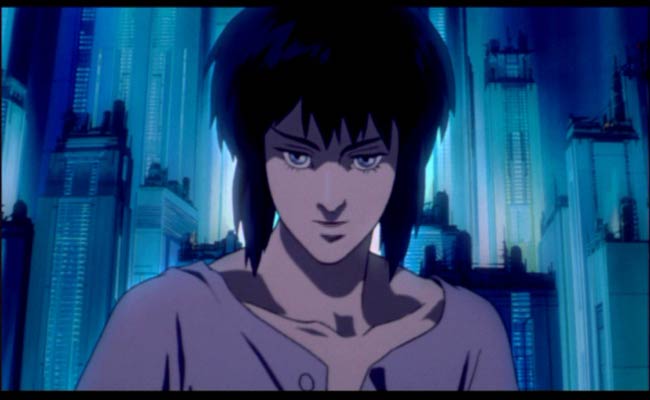
Revolutionizing Anime: Oshii revolutionized animation in GITS with a myriad of new and innovative computer graphics techniques. In short, Oshii pushed the boundaries for state-of-the art animation with GITS. Oshi scanned his animation cells in to a digital system so that he could import them into an editing suite to get all sorts of cool lens effects. For instance, in the above pic, Oshii is able to emulate a contra-pull type effect where the camera moves back, and the lens moves forward. In viewing this, the background expands while the foreground eerily stays in the same place. This works wonderfully for Motoko’s questioning of humanity speech. And this is only one of many interesting used of digital shots. Other techniques include interesting overlays that depict either brain activity or maps, for instance.
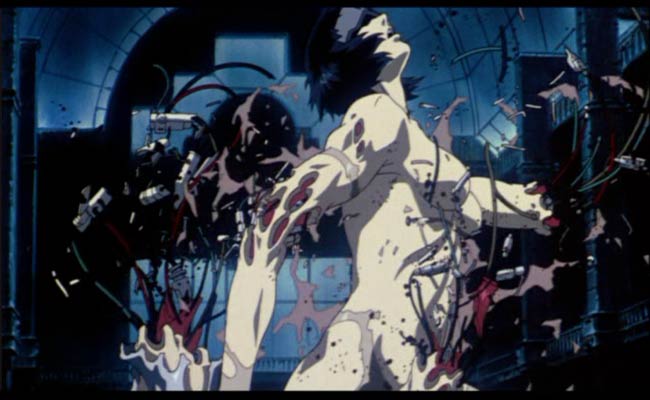
Questioning Humanity: Ghost in the Shell still provides anime’s the best examination in the questioning humanity. GITS is dominated by an ongoing discussion of what it means to be human and really, what it means to be alive. Is Motoko really still human? Even she doesn’t know the answer anymore, and actually questions whether she really has a ghost (how would she be able to differentiate a fake ghost from a real one?). This line of questioning is artfully developed in a way that makes Motoko the character in all of anime that I empathize with the most. You truly feel for the dilemma she finds herself facing.
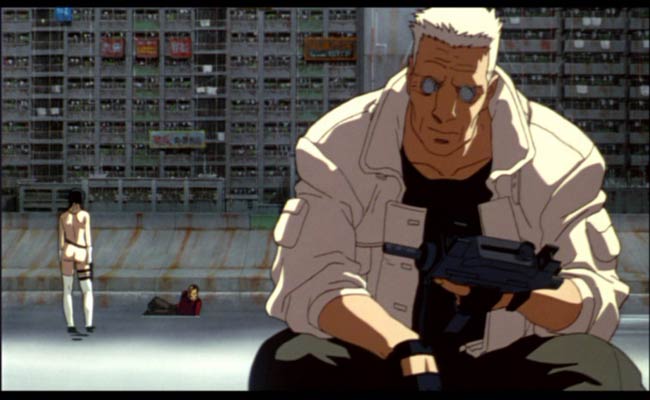
What is the Matrix? If we examine the Matrix, we find that both the visuals and storyline are heavily influenced by Ghost. There are some rather explicit visual “nods” in the first Matrix, including the opening digital sequence, Mr. Smith’s building jump where he breaks the concrete beneath him (this is virtually identical to Motoko pursuing the first puppet victim), and the shooting of the fruit stand where Neo is running near the end. On top of this, we have a reversal of roles in the Matrix, where Neo plays Motoko and Trinity emulates Batau. And again, the Wachowskis make no bones about where their influence came from - they, as much as anyone, have contributed to Ghost’s ever increasing popularity.
In looking at the storyline, we find even more interesting parallels. Ghost in the Shell ends with Motoko merging with the sentient program called the Puppet Master (Project 2501). This allows the Puppet Master produce a diversity of offspring that is simply not possible to do with copies alone. This has a direct parallel to the scifi view of Neo in the above review. While Ghost in the Shell 2: Innocence is the philosophical sequel to Avalon, the Matrix trilogy is just as clearly the sequel to Ghost in the Shell. Whereas GITS ends with this merging of a sentient program with a human ghost, the Matrix expands on this idea. We see Neo take the same journey, but in a very different way. He conducts this symbiotic merging over 3 movies whereas Motoko does this in a matter of minutes. We see Neo, through this merging of sentient program with a human, become the “one” - an omnipotent style being. This characterization is similar to the characterization that Batau gives of Motoko in GITS2 in his dogs and gods versus flawed humans speech.
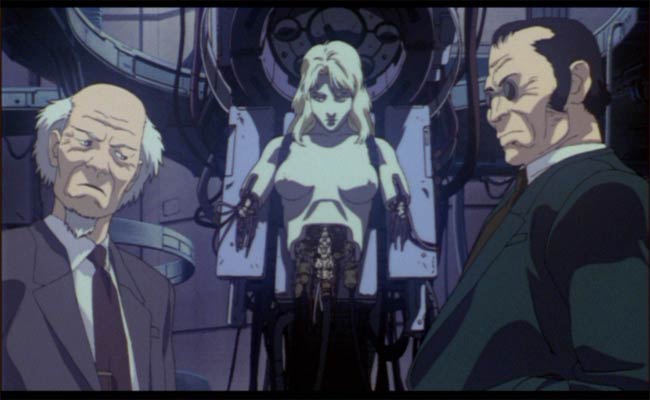
Also interesting is the linkage between the puppet master’s desire to digitally produce offspring with Neo’s reloading of the Matrix. The puppet master discusses this at the end of GITS in the “Life perpetuates itself through diversity and this includes the ability to sacrifice itself when necessary” monologue. If you trace the linkages, Neo’s reloading of the Matrix this is a method for the sentient program portion of Neo to create diversity and offspring. The merging of Neo allows the sentient program to grow and develop in ways simply not possible by itself. Familiarity with Neo’s Ghost allows it to make the changes necessary to correct the errors that build up in the current Matrix that prompt the battery people to disbelieve their surrounding.
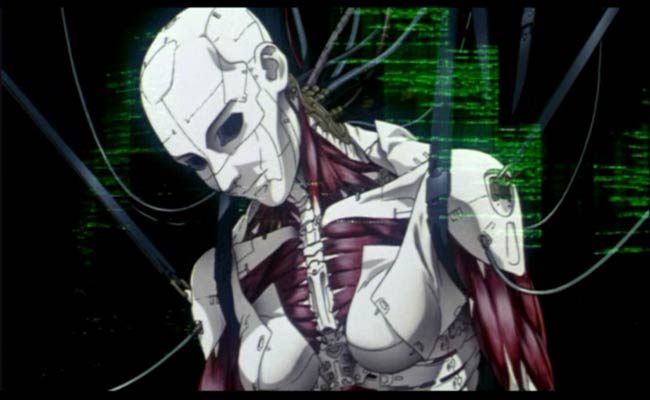
Finally, Ghost gives us a truly interesting vision of the future. We get sound astoundingly realistic and grungy cityscapes that are filled with the most impressive technological horrors. Is it truly a stretch to imagine that technology will augment our physical abilities? This is the bionic man taken to another level. On top of this, if we truly can learn to connect manufactured parts to our nervous system, is it really that far of a stretch to imagine that our brains become augmented? And over time, is it truly a stretch to believe that the line between humanity and robot won’t be blurred? GITS questions these articles of faith in such a believable way that we have seen a shift in our overall thinking on this issue.
The Bottom Line: Truly, even if you ignore all this philosophical stuff, Ghost in the Shell is simply an awesome movie! The action is terrific, the visuals are great, the soundtrack is devine…I could go on and on. If you just see one anime, Ghost in the Shell, still my favorite anime, is hands down the one to get.
Page 2: More GITS Screencaps –>>
~See movies similar to this one~
Tags: cyberpunk movie review anime ghost shell
Year: 1998
Directed by: Ryutaro Nakamura
Written by: Chiaki Konaka
IMDB Reference
Degree of Cyberpunk Visuals: High
Correlation to Cyberpunk Themes: Very High
Key Cast Members:
Lain Iwakura: Kaori Shimizu
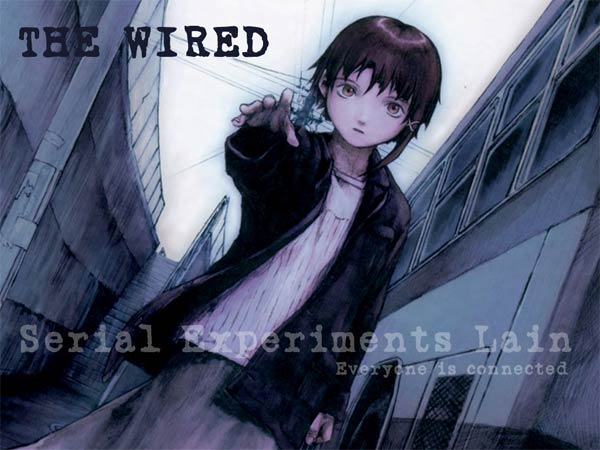
Overview: Serial Experiments Lain is a psychedelic, post-modern cyberpunk series that one wonders how the director ever managed to make. Lain centers on a very shy school girl who slowly begins to figure out that she is not what she seems to be. After getting a computer and connecting to the “wired,” something with is far more expansive than the internet, Lain begins to realize that she may not be human, and that truly, reality and the “self” is exists (or does not exist) on many different levels. As the story progresses, Lain “evolves” in terms of understanding what she is and her place in a very post-modern world. We also get many interesting side stories, including crime, teenage coming of age issues, and dastardly plots.
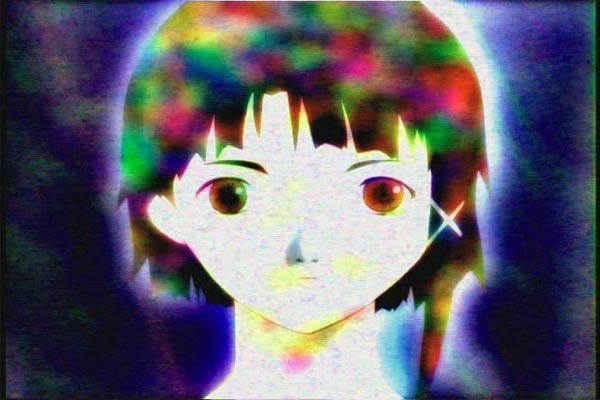
The pacing of Lain is just strange. Lain is NOT an action fest, nor is it by any means straight forward. Lain starts out rather slowly and gets weirder every episode. Truly, the story is told in a very “traditional” post-modern fashion in that we have fragmented vignettes structured in a seemingly random non-linear manner. Lain uses disconnected visuals to continually barrage the viewer with different textures, color schemes, and sounds. Yet over time, it becomes clear that the story is being spunk in seemingly a cyclical fashion, almost as if we are exploring a large Mandelbrot by starting at an outside spiral and slowly working our way around to the big picture. Each fragmented vignette gets added to until, at the end, we have a rather expansive tapestry to explore.
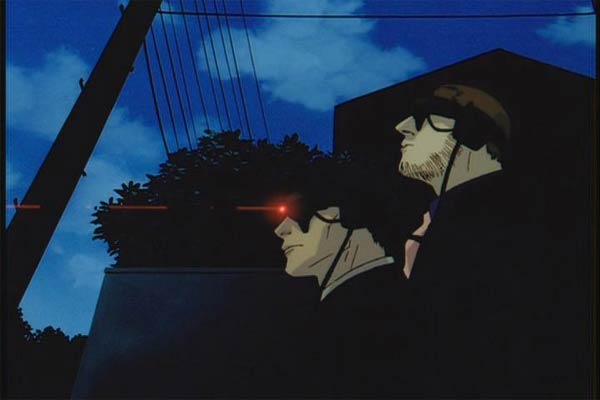
Many different and interesting philosophical ideas. But it is pure philosophical cyberpunk. Many key issues are discussed here, including:
- What constitutes “reality”?
- How real is time?
- What constitutes the “self” as a singular entity?
- What constitutes “God”?
- How are sentient programs different from humans?
- Is there such a thing as collective humanity?
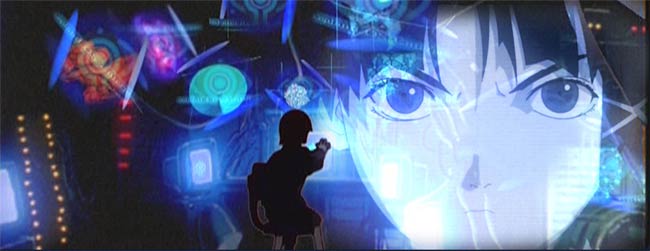
The visuals in Lain really aren’t there to “Wow” us as they are in some animes - instead they are often designed to provoke moods and thought patterns (BTW, there are so many screen caps available, that there was no need to take my own). Among the thought provoking visuals, we get:
- Psychedelic visions that explore multiple “selves” versus a singular “I”
- Juxtapositions of noise with false clarity
- Information Theory described visually
- An ever increasing feeling “disbelievability” each time the drab and normal school scene is shown.
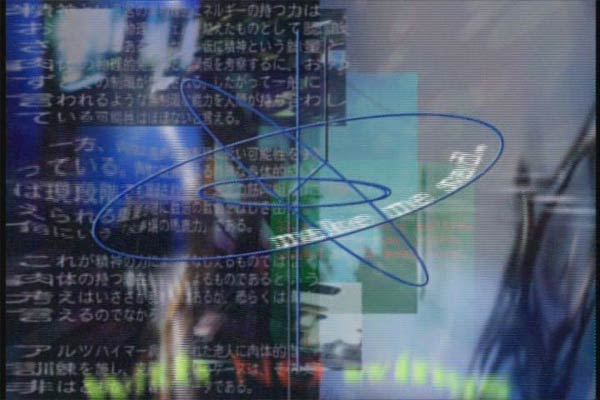
The Bottom Line: In the end, we are left with very open-ended thoughts. Serial Experiments Lain does not provide us with answers, instead, it opens us up to questions. And while I might argue that the post-modern pacing got too circular in places, and that I might argue the same tale could have been spun in half the time, the overall effect is rather extraordinary.
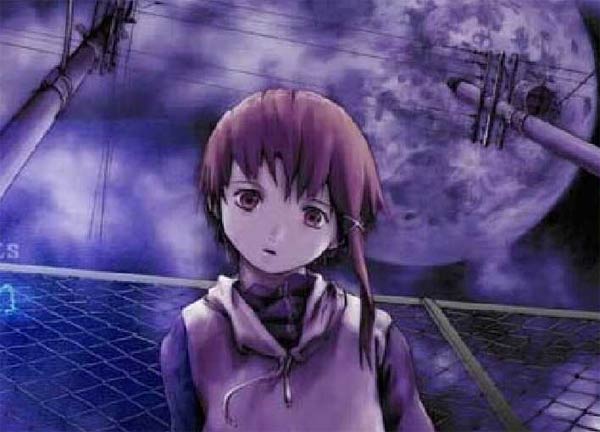
~See movies similar to this one~
Tags: cyberpunk movie review anime Serial Experiments Lain
|




























































